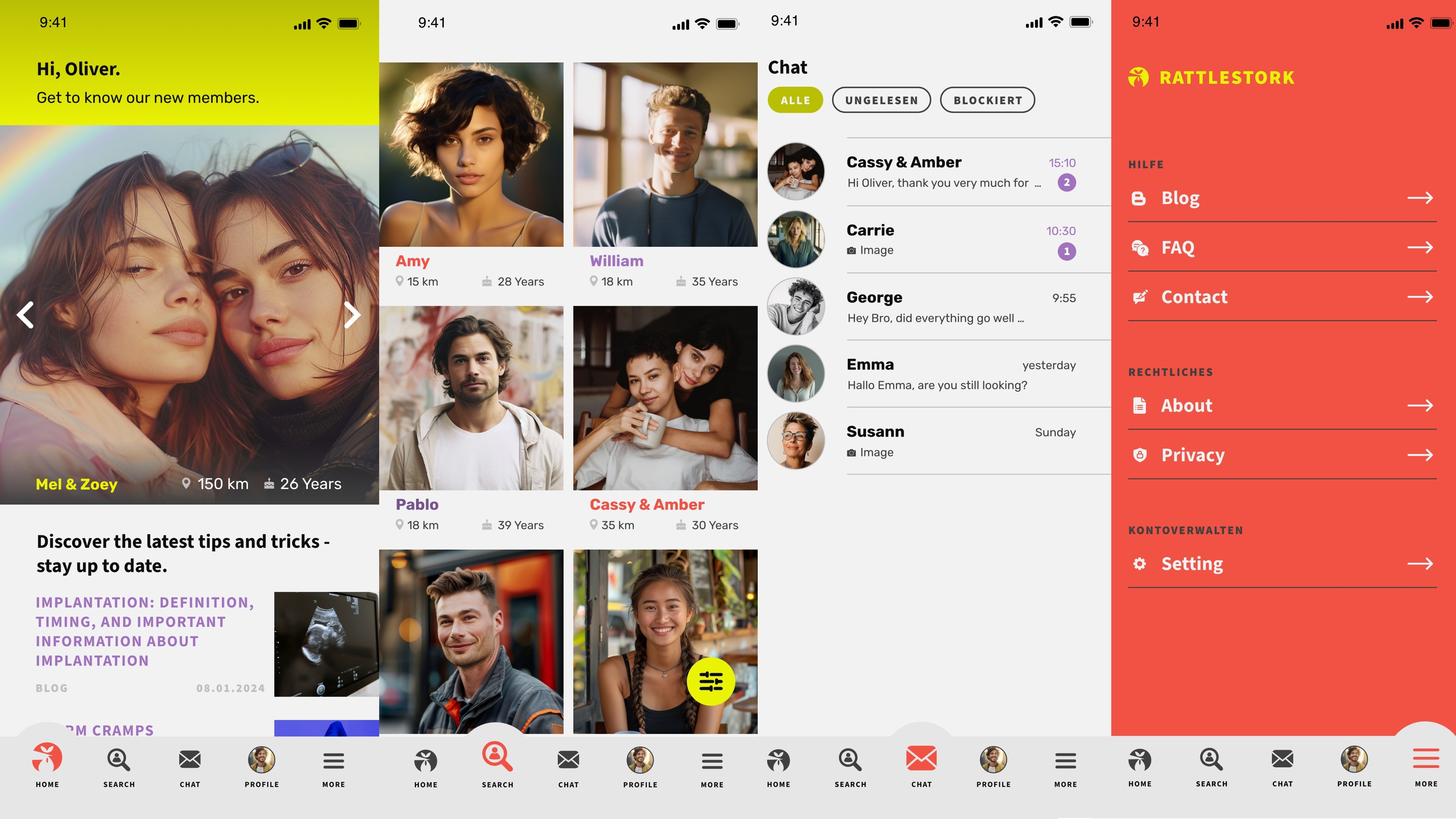Decision first
Before appointments and medicines, decide roles: who donates, who carries—and why. Key inputs are egg age and findings, day-to-day practicality, and your shared preference. A simple decision matrix helps:
| Criterion | Questions to assess | Practical tip |
|---|---|---|
| Egg factors | Age, AMH/AFC, endometriosis, previous surgery | Align roles with egg age |
| Uterine factors | Lining, fibroids/polyps, inflammation | Address issues before starting |
| Work & life | Work hours, shifts, care support | Share calendars and plan cover |
| Preference & roles | Who prefers to donate, who to carry—now & later? | Discuss expectations openly |
How reciprocal IVF works
Partner A’s eggs are stimulated and collected, fertilised in the lab with donor sperm, and the embryo is transferred to Partner B’s uterus. A contributes the genetics, B the pregnancy. For a future sibling, you can intentionally swap roles. The clinical pathway mirrors IVF; the main differences are role allocation, documentation and legal steps.

Success rates and factors
The strongest lever is the egg age of the donating partner. Other drivers include lab quality, embryo development, endometrial preparation, transfer timing, a single-embryo strategy, and co-existing conditions. Professional bodies often recommend single-embryo transfer to reduce multiple pregnancy risks—reflected in ESHRE stimulation guidance and everyday clinical practice (ESHRE).
| Factor | Impact | What to do |
|---|---|---|
| Egg age | high | Use age & AMH/AFC to inform role choice |
| Embryo quality | moderate–high | Choose an experienced lab; use add-ons only with proven benefit (ASRM) |
| Endometrium | moderate | Treat inflammation/fibroids; hit the transfer window |
| Transfer strategy | moderate | Usually single-embryo transfer; weigh risks carefully |
| Lifestyle | moderate | Don’t smoke; prioritise sleep, nutrition and stress care |
For donation standards and add-ons, the ASRM guidance is a clear benchmark (ASRM). For a plain-language overview of causes and care pathways, see PregnancyInfo.ca (SOGC) and the NHS.
Step-by-step
Pre-assessment for both: History, ultrasound, hormones, ovarian reserve (AMH/AFC), infection screening, vaccination review; genetic counselling if needed. Set roles, timeline and budget; select a clinic.
Ovarian stimulation and egg collection (Partner A): Stimulation with monitoring, trigger, transvaginal collection. Aim: good yield with a low OHSS risk.
Fertilisation and embryo culture: IVF/ICSI depending on findings, culture over several days, quality grading. Use add-ons only where benefit is evidenced.
Preparing for transfer (Partner B): Lining preparation in a natural or substituted cycle; define the transfer window; usually single-embryo transfer.
Transfer and follow-up: Embryo transfer, luteal support, pregnancy test, early scan; adjust medicines where needed.
Safety, tests and medicines
Standard care includes up-to-date infection screening, vaccination status (e.g. rubella), medicine and thyroid checks, and folic acid pre-conception. Modern protocols reduce OHSS risk; single-embryo strategies cut multiple pregnancy risk. Core principles are consistent across guidelines (see ESHRE and PregnancyInfo.ca).
Time, costs and organisation
Expect waits for the first appointment and diagnostics. The active phase typically spans two to six weeks—from stimulation through collection and culture to transfer. Costs and funding vary widely across provinces and insurance plans; plan headroom for extra cycles or frozen transfers and keep documents centralised.
| Building block | What to consider | Practical tip |
|---|---|---|
| Appointments | Monitoring, procedure day, transfer window, time off work | Shared calendar; arrange cover early |
| Budget | Stimulation, collection, lab, transfer, medicines; possible freezing & storage | Request itemised quotes; add contingency |
| Documents | Consents, donor papers, invoices, protocols | Scan and store centrally for the long term |
| Logistics | Travel, childcare, day-to-day support | Use checklists; define responsibilities |
Choosing a donor
You may use a clinic/sperm-bank donor or a known donor. Prioritise current testing, transparent profiles, clarity on future contact, and robust documentation. If you plan siblings, discuss same-donor availability and family limits early. Clinic pathways provide quality control and traceability; if considering private routes, structured agreements and legal advice are essential.
Legal basics (Canada)
Assisted reproduction in Canada is regulated federally under the Assisted Human Reproduction Act and the Safety of Sperm and Ova Regulations, administered by Health Canada. The birth mother is a legal parent. Recognition of the non-birth parent is governed by provincial/territorial parentage laws (e.g., Ontario’s All Families Are Equal Act), typically via marriage/common-law status and clinic consent forms; processes and forms vary by province. Donor information rules follow federal safety regulations; identity-release policies depend on clinic and province (Canada does not have a single national identity-release registry like the UK’s HFEA). Storage, consent and record-keeping are governed by federal rules and clinic policies—your clinic will provide the required consent forms for parentage and storage.
Myths and facts
- More embryos mean higher chances? Single-embryo transfer reduces risk and is often the safer strategy.
- The fitter partner should carry? Egg age, medical history, daily life and preference matter more.
- Add-ons always help? Only use those with proven benefit.
- Law is the same everywhere? Rules differ by country—and in Canada, some details differ by province.
- Fresh beats frozen? Frozen transfers can perform just as well.
- Lifestyle cancels out age? Healthy habits help but don’t replace biology.
- A known donor makes everything simpler? Testing, documentation and clear agreements remain essential.
- One negative transfer means the plan was wrong? Several attempts are common; protocols can be adjusted.
When to see a doctor
- Before starting: baseline assessments plus role and timeline planning.
- If you have existing conditions, take regular medicines or have cycle irregularities.
- If pregnancy doesn’t occur after transfers or protocols need changing.
Patient-friendly information: PregnancyInfo.ca; technical guidance on stimulation and timing: ESHRE.
Find donors with RattleStork
RattleStork helps you search for donors with verified profiles, secure messaging and tools for scheduling, notes, cycle and timing planning, plus private checklists. Focus: transparency, safety and sound documentation. RattleStork is not a substitute for medical advice.

Conclusion
Reciprocal IVF combines shared involvement with the structure of clinical care. What matters most: egg age, a well-prepared endometrium, realistic time and budget plans, evidence-based choices and the right legal paperwork for your province. Careful planning creates good conditions for a safe course—now and for future siblings.

